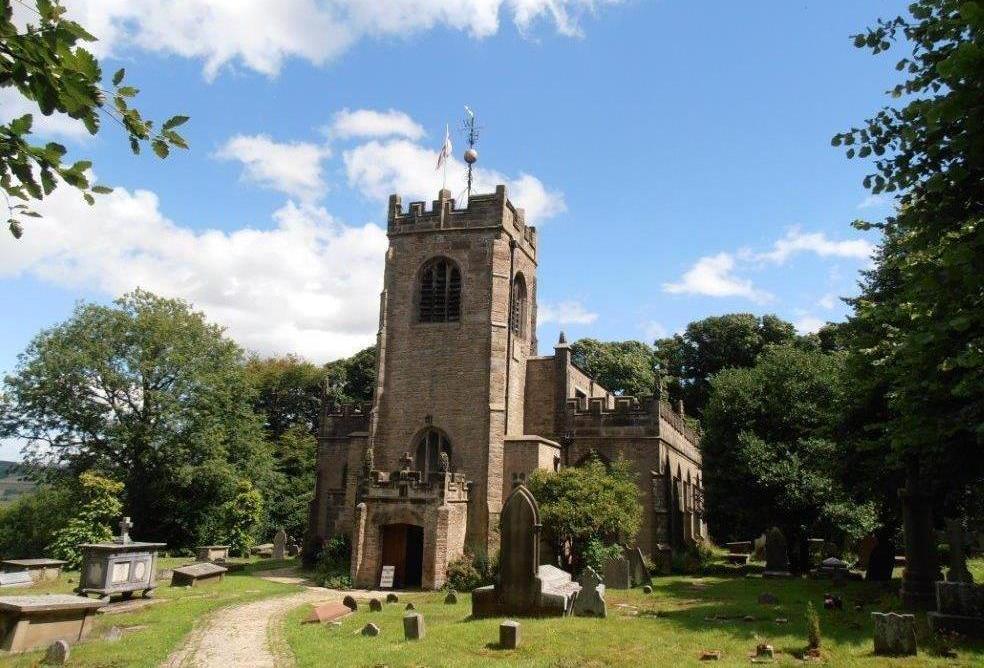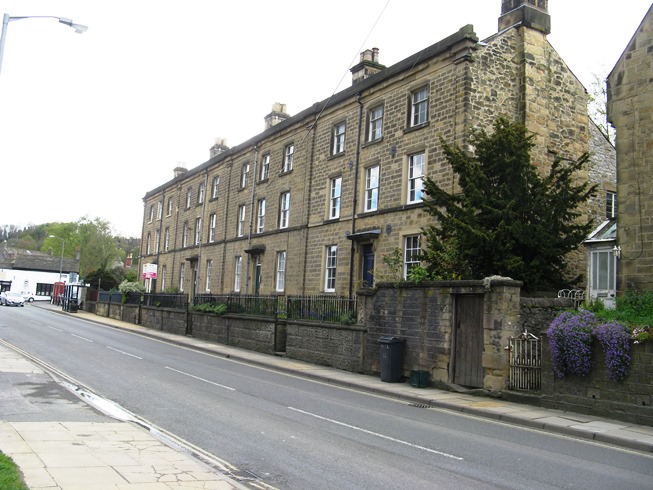Trips 2018 - 2019
Between October 2018 and July 2019 the outdoor activities of the Society comprised of trip and walks, namely to Adlington, Bakewell, Compstall, Disley, Leek, Manchester, and Mellor Mill.

Neil’s objective this evening was to show that there was more to Disley than just a set of traffic lights on the A6. He also wanted to show how the roads and the railway have changed the shape and the nature of Disley over the centuries. It might be the closest settlement to Lyme but it is not dependent upon the Leghs of Lyme - it has an independent existence.
We started off in the station car park because it was quiet and also free. (Which was more than could be said for the Ram’s Head car park.) He showed us a series of maps which illustrated the development of Disley since the Norman Conquest. Originally part of the Macclesfield Forest, a Royal Forest largely reserved for hunting, it did have a few people living there. However, they preferred the higher land away from the valley bottoms but below the moorland. What we now know as Higher Disley is the site of the original settlement.
- Details
- Category: Trips 2018 - 2019
- Hits: 3542
 At 9:15am on Sunday 7th July a party of 24 left a rather cool Marple and headed for Bakewell where, after a 25 mile drive, we were greeted by Mike Hillam at the Old House Museum with a welcoming drink of tea or coffee. The clouds quickly dispersed and the day rapidly turned into a scorcher.
At 9:15am on Sunday 7th July a party of 24 left a rather cool Marple and headed for Bakewell where, after a 25 mile drive, we were greeted by Mike Hillam at the Old House Museum with a welcoming drink of tea or coffee. The clouds quickly dispersed and the day rapidly turned into a scorcher.
- Details
- Category: Trips 2018 - 2019
- Hits: 3392
 When the Andrew family came to Compstall, the village, if it could be called a village, comprised several farms and some cottages known as Becum Fold. From this beginning, George Andrew and his sons built a spinning and weaving mill, a textile print works, houses for 800 people, a church and other buildings, including the Athenaeum. In fact, they created a community.
When the Andrew family came to Compstall, the village, if it could be called a village, comprised several farms and some cottages known as Becum Fold. From this beginning, George Andrew and his sons built a spinning and weaving mill, a textile print works, houses for 800 people, a church and other buildings, including the Athenaeum. In fact, they created a community.
- Details
- Category: Trips 2018 - 2019
- Hits: 4142
 2019 is our fourth season of Summer Evening Strolls, and the 41 people who turned up on Monday 20th May for the first of this year’s evenings showed that this Society initiative has lost none of its popularity with members and visitors alike.
2019 is our fourth season of Summer Evening Strolls, and the 41 people who turned up on Monday 20th May for the first of this year’s evenings showed that this Society initiative has lost none of its popularity with members and visitors alike.
We were down at Mellor Mill to explore the excavations of the mill footprint and Oldknow’s mansion, Mellor Lodge, now fully revealed following landscaping of the site as the culmination of the Heritage Lottery funded ‘Revealing Oldknow’s Legacy’ project.
- Details
- Category: Trips 2018 - 2019
- Hits: 3476
 Adlington Hall, set deep in the Cheshire countryside, is a unique record of design over the centuries. Despite passing its entrance many times in my youth, I had never been to see it. This was a chance that could not be missed. The day dawned and the weather was perfect.
Adlington Hall, set deep in the Cheshire countryside, is a unique record of design over the centuries. Despite passing its entrance many times in my youth, I had never been to see it. This was a chance that could not be missed. The day dawned and the weather was perfect.
My first impression was, ‘what a wonderful Tudor house’. This was the east side of the house, the outside of which has been extensively renovated so it looks pristine. Green oak has been used to replace damaged wood and wattle and daub used for the infill. Interestingly the wood was grey, its natural colour. In the past it was apparently coated in linseed oil which developed a fungal growth which gave a black appearance and the Victorians perpetuated this by using paint!
- Details
- Category: Trips 2018 - 2019
- Hits: 3186
 A group of some 28 members of Marple Local History Society visited the disused Manchester Mayfield Station on Friday afternoon, February 22nd led by Blue Badge Guide, Jonathan Schofield. He explained that it had been built in 1910 by the London and North Western Railway Company alongside London Road, now Piccadilly Station to relieve the extra pressure on the existing London Road platforms caused by the opening of the Styal Line in 1909. Mayfield Station was connected to London Road Station by an overhead footbridge.
A group of some 28 members of Marple Local History Society visited the disused Manchester Mayfield Station on Friday afternoon, February 22nd led by Blue Badge Guide, Jonathan Schofield. He explained that it had been built in 1910 by the London and North Western Railway Company alongside London Road, now Piccadilly Station to relieve the extra pressure on the existing London Road platforms caused by the opening of the Styal Line in 1909. Mayfield Station was connected to London Road Station by an overhead footbridge.
- Details
- Category: Trips 2018 - 2019
- Hits: 4327
 By chance I met MLHS member Pat Butler one summer’s day in Market Street. She went into raptures about the beautiful Arts and Crafts church of St Wilfrid, Halton, Leeds which she discovered when she came on the Society visit in May, and she suggested we carry on the Arts and Crafts theme with an autumn visit to Leek. Leek had a market in medieval times, but it began to flourish in the late 18th Century as a centre for the production of silk textiles. In the late 19th century the notable designer, William Morris, worked with Sir Thomas Wardle, the leading silk manufacturer of the day, in developing natural silk dyeing techniques. Morris’s architect and designer friends were attracted to the town and it became a focus for Arts and Crafts Movement architecture. The Society last visited Leek in 2002, so it was about time for a return. We started at Richard Norman Shaw’s All Saints Church of 1885.
By chance I met MLHS member Pat Butler one summer’s day in Market Street. She went into raptures about the beautiful Arts and Crafts church of St Wilfrid, Halton, Leeds which she discovered when she came on the Society visit in May, and she suggested we carry on the Arts and Crafts theme with an autumn visit to Leek. Leek had a market in medieval times, but it began to flourish in the late 18th Century as a centre for the production of silk textiles. In the late 19th century the notable designer, William Morris, worked with Sir Thomas Wardle, the leading silk manufacturer of the day, in developing natural silk dyeing techniques. Morris’s architect and designer friends were attracted to the town and it became a focus for Arts and Crafts Movement architecture. The Society last visited Leek in 2002, so it was about time for a return. We started at Richard Norman Shaw’s All Saints Church of 1885.
From the outside All Saints is a rather austere but imposing building. It is Grade 1 listed, and the architect Richard Norman Shaw declared it to be his best church.
- Details
- Category: Trips 2018 - 2019
- Hits: 4670

